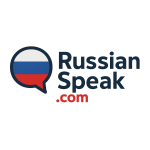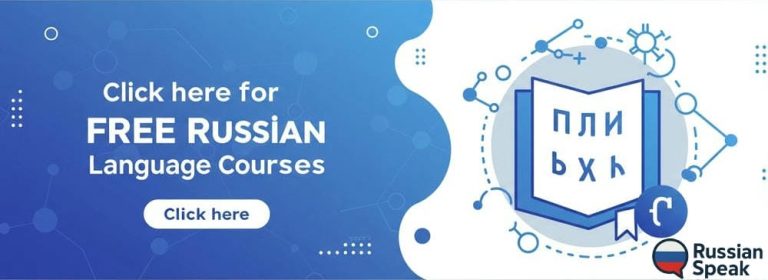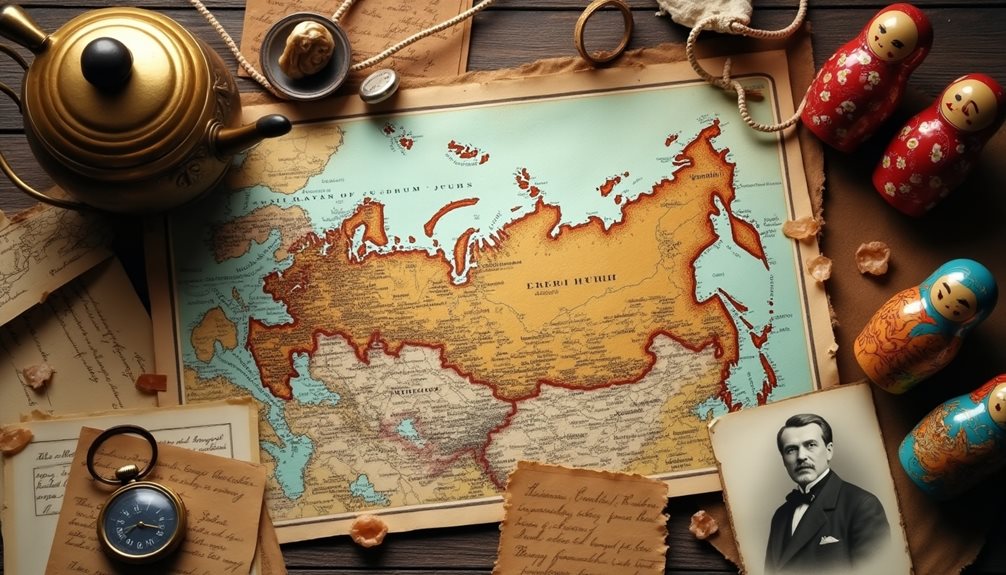Table of Contents
ToggleThe Kievan Rus’: Origins and Influence
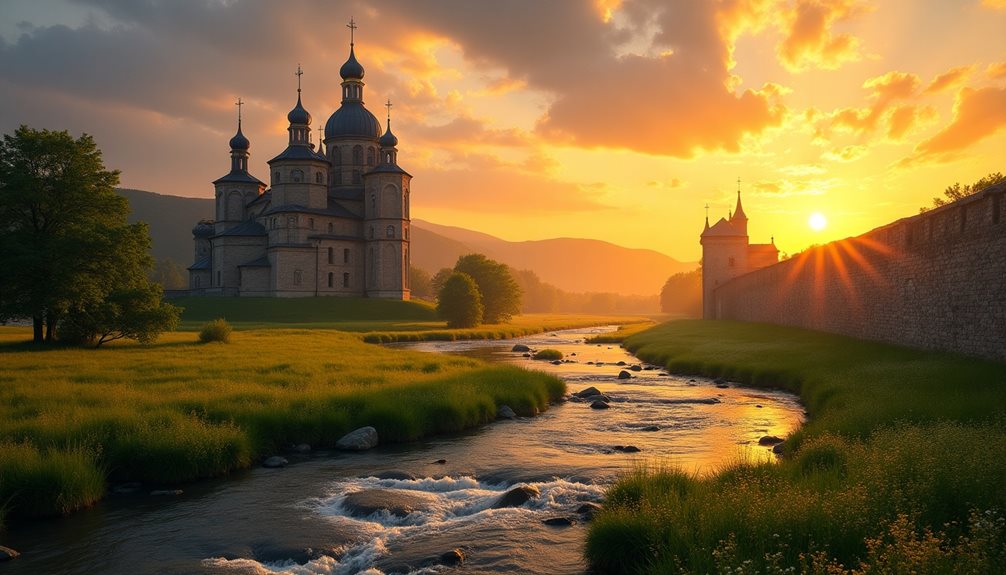
The Kievan Rus’ represents a significant historical entity in Eastern Europe, characterized by its formation in the late 9th century and its influence on the cultural and political landscape of the region.
This federation emerged under the influence of Viking settlers, who established Kievan governance that integrated local Slavic traditions. The adoption of Orthodox Christianity in the 10th century marked a crucial shift, fostering cultural exchange with Byzantium and reinforcing political alliances.
The Kievan Rus’ thrived on essential trade routes connecting Europe and Asia, facilitating economic prosperity and cultural dissemination.
These elements collectively shaped the identity of the Kievan Rus’, establishing a foundation that would influence subsequent nations and their governance structures, while promoting a legacy of interconnectedness in Eastern Europe.
The Kievan Rus’ was a powerful federation that started in the late 9th century and lasted until the mid-13th century. It played a key role in shaping the history of Eastern Europe and the development of modern countries like Russia, Ukraine, and Belarus.
Origins of the Kievan Rus’
The Kievan Rus’ began when Viking traders and warriors, known as the Varangians (Варяги, Varyagi), came down from Scandinavia. They settled in the area around the city of Kiev (Киев, Kiyev), now the capital of Ukraine. They mixed with the local East Slavic tribes. This mix created a new political and cultural federation.
The leader of this early state was often called the knyaz (князь, knyaz), meaning prince or ruler. The governance system combined Viking traditions with Slavic customs.
The Adoption of Orthodox Christianity
One of the most important events in the history of the Kievan Rus’ was the official adoption of Orthodox Christianity in 988 AD under Prince Vladimir the Great (Владимир Великий, Vladimir Velikiy). This event had many effects:
- It strengthened ties with the Byzantine Empire (Византия, Vizantiya).
- It introduced new religious, cultural, and artistic influences.
- It helped unify the diverse peoples within the federation under one faith.
Russian Terms for “The Orthodox Christianity”
| Cyrillic | Phonetic | English Definition |
|---|---|---|
| Крещение Руси | Kreshcheniye Rusi | Baptism of Rus’ / Christianization of Rus’ |
| Владимир Великий | Vladimir Velikiy | Vladimir the Great (Prince of Kievan Rus’) |
| Византия | Vizantiya | Byzantine Empire |
| Православие | Pravoslaviye | Orthodoxy / Orthodox Christianity |
| Русь | Rus’ | The historical region/federation of Kievan Rus’ |
| Князь | Knyaz | Prince (ruler in Kievan Rus’) |
| Церковь | Tserkov’ | Church |
| Вера | Vera | Faith / Religion |
| Культура | Kultura | Culture |
| Единство | Edinstvo | Unity |
| Религия | Religiya | Religion |
| Влияние | Vliyanie | Influence |
![]()
Economic Prosperity and Trade
The Kievan Rus’ was located on major trade routes connecting Northern Europe to Byzantium and further to Asia. The most famous trade route was called “from the Varangians to the Greeks” (из варяг в греки, iz varyag v greki). Through these routes, goods like furs, honey, wax, and slaves were traded for luxury items like silk and spices.
This trade brought wealth to the cities and helped spread cultural ideas.
Legacy of the Kievan Rus’
The Kievan Rus’ laid down foundations for later East Slavic states. After its decline due to Mongol invasions in the 13th century, its culture, language, and political ideas influenced the development of Russia, Ukraine, and Belarus.
Russian Terms for Legacy of the Kievan Rus’
| Cyrillic | Phonetic | English Definition |
|---|---|---|
| Русь | Rus’ | The name of the federation |
| Киев | Kiyev | Kiev, capital city |
| князь | knyaz | Prince or ruler |
| Варяги | Varyagi | Varangians (Viking settlers) |
| православие | pravoslavie | Orthodoxy (Orthodox Christianity) |
| Византия | Vizantiya | Byzantine Empire |
| торговый путь | torgovyi put’ | Trade route |
| христианство | khristianstvo | Christianity |
| монголы | mongoly | Mongols |
| культура | kultura | Culture |
![]()
The Mongol Invasion and Its Impact
Although the Kievan Rus’ had established a considerable cultural and political presence in Eastern Europe, the Mongol invasion of the 13th century fundamentally altered the region’s trajectory.
The Mongols employed innovative tactics that dismantled existing structures, leading to:
- Political Fragmentation: The invasion splintered the Kievan Rus’ into smaller principalities, diminishing centralized power.
- Economic Impact: Trade routes were disrupted, which forced a shift towards a feudal system, altering social hierarchy and economic relationships.
- Cultural Assimilation: Over time, the Mongols influenced local customs, creating a complex blend of traditions that reshaped societal norms.
The Mongol military legacy persisted, affecting future military strategies and governance, while considerably influencing the social and economic landscape of the region.
Russian words derived from the Mongol language.
| Russian Word | English Phonetic | English Definition |
|---|---|---|
| Базар | bazar | Market |
| Тайга | tayga | Dense forest |
| Тугай | tugay | Riverine forest |
| Чин | chin | Rank, title |
| Карантин | karantin | Quarantine |
| Тумак | tumak | Helmet |
| Ярлык | yarlyk | Official decree |
| Орда | orda | Horde, camp |
| Сарт | sart | Merchant, trader |
| Кисет | kiset | Tobacco pouch |
![]()
The Time of Troubles: A Period of Crisis
A period of profound upheaval marked the Time of Troubles in Russia, spanning from the death of Tsar Ivan IV in 1584 to the establishment of the Romanov dynasty in 1613.
This era was characterized by political instability, famine, and social strife. The power vacuum created by Ivan’s death led to a series of Cossack rebellions, as discontented peasants and nobility sought to challenge the ruling elite.
Simultaneously, foreign interventions exacerbated the crisis, with Poland and Sweden vying for influence over Russian territories. These external pressures further destabilized the nation, complicating the internal struggle for power.
Ultimately, the Time of Troubles highlighted the fragility of governance in Russia and set the stage for significant political transformation.
Time of Troubles in Russia (1584–1613):
| Aspect | Details / Statistics |
|---|---|
| Time Period | 1584–1613 (29 years) |
| Starting Event | Death of Tsar Ivan IV (Ivan the Terrible) in 1584 |
| Ending Event | Establishment of the Romanov dynasty in 1613 |
| Political Instability | Multiple claimants to the throne; several impostors known as False Dmitrys appeared |
| Major Rebellions | Several Cossack uprisings and peasant rebellions (e.g., Bolotnikov Rebellion, 1606–1607) |
| Foreign Intervention | Poland and Sweden engaged in military campaigns and political interference |
| Impact on Population | Severe famine during early 1600s, estimated millions died (exact numbers vary) |
| Territorial Conflict | Battles for control over Russian lands, especially in border regions |
| Outcome | End of Rurik dynasty; beginning of Romanov rule with Michael I in 1613 |
| Social Impact | Widespread social unrest, decline in central authority, increased power of local nobles (boyars) |
| Economic Impact | Economic disruption due to war, famine, and social chaos |
![]()
The Romanov Dynasty: Rise and Reign
Emerging from the chaos of the Time of Troubles, the Romanov dynasty established itself as a vital force in shaping Russia’s future. This period marked significant developments:
- Romanov Succession: The dynasty solidified its rule through strategic marriages and alliances, ensuring stability and continuity.
- Imperial Expansion: Under leaders like Peter the Great and Catherine the Great, Russia expanded its borders, increasing its influence in Europe and Asia.
- Cultural Achievements: The era witnessed remarkable advancements in arts and sciences, fostering a rich cultural landscape.
Additionally, the Romanovs enacted political reforms and economic policies aimed at modernization, while forming essential foreign alliances that enhanced Russia’s standing on the global stage.
This blend of strategies solidified the Romanov legacy in Russian history.
Era of the Romanov Dynasty:
| Aspect | Statistic / Fact |
|---|---|
| Time of Troubles end | 1613 (start of Romanov dynasty with Michael I) |
| Duration of Romanov rule | About 304 years (1613–1917) |
| Key rulers | Peter the Great (reigned 1682–1725), Catherine the Great (reigned 1762–1796) |
| Territorial expansion | Russia expanded significantly in Europe and Asia under Peter and Catherine the Great |
| Cultural advancements | Growth in arts and sciences, including establishment of institutions like the Russian Academy of Sciences (1724) |
| Political reforms | Peter the Great’s modernization reforms included military, administrative, and social changes |
| Economic policies | Modernization efforts focused on industry and trade expansion |
| Strategic marriages/allies | Dynastic marriages strengthened ties with European powers like Germany and Sweden |
| End of dynasty | 1917 (Russian Revolution) |
![]()
The Emancipation of the Serfs: A Turning Point
As the 19th century progressed, the issue of serfdom became increasingly contentious in Russia, ultimately culminating in the landmark Emancipation Reform of 1861.
This serfdom reform abolished the legal bondage of millions, marking a pivotal moment in Russian history. The reform aimed to liberate serfs from oppressive feudal obligations, granting them personal freedom and the right to own property.
However, the social impact was complex; while many serfs gained autonomy, they often faced economic hardships due to insufficient land allocation and persistent inequalities.
The reform ignited discussions about social justice and economic modernization, laying the groundwork for future movements advocating for greater rights and freedoms.
Consequently, it represented both a significant advance and a source of ongoing social tension in Russian society.
The Russian Revolution: Causes and Consequences
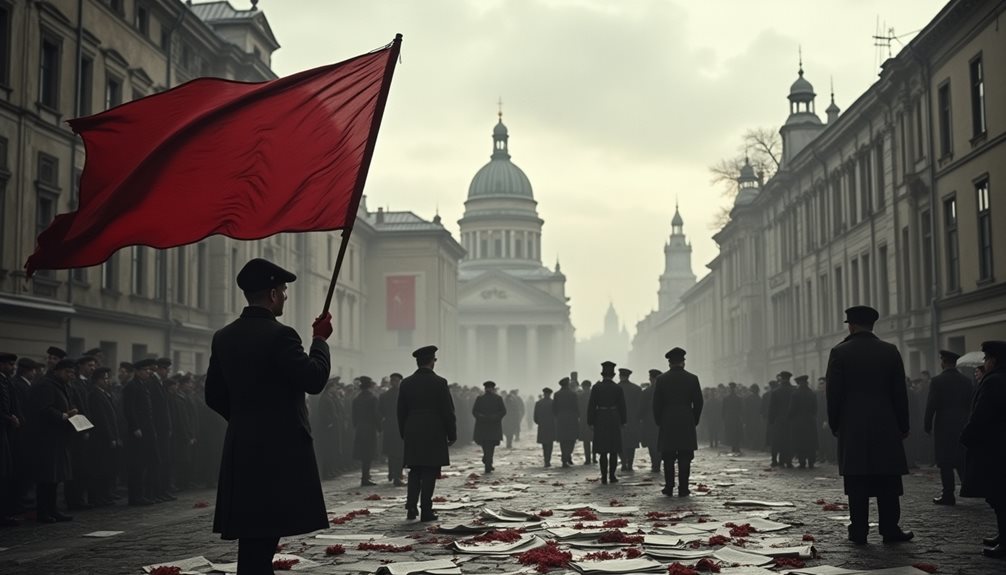
Although the Russian Empire had experienced significant social and economic changes in the decades following the Emancipation Reform of 1861, deep-seated grievances persisted among various classes, ultimately fueling the Russian Revolution of 1917.
Key factors contributing to this upheaval included:
- Revolutionary Ideologies: The proliferation of Marxist and socialist ideas inspired a vision for a classless society.
- Social Unrest: Widespread discontent among peasants and workers arose from brutal working conditions and poverty, creating a fertile ground for rebellion.
- Political Suppression: The autocratic regime’s refusal to implement meaningful reforms intensified calls for change.
These elements coalesced into a powerful movement, challenging the existing order and leading to the establishment of a new political landscape in Russia, profoundly altering the course of its history.
The causes and consequences of the Russian Revolution based on historical data:
| Topic | Statistic | Source/Notes |
|---|---|---|
| Emancipation Reform | 23 million serfs emancipated in 1861 | Emancipation Reform of 1861 |
| Peasant Population | Around 80% of Russia’s population were peasants | Early 20th century census |
| Industrial Workers | Approximately 4 million industrial workers by 1914 | Rapid industrialization before WWI |
| Working Hours | Up to 12-14 hours per day for factory workers | Labor conditions before revolution |
| Literacy Rate | About 21% literacy rate in 1897 | Reflects education level among peasants and workers |
| Military Deaths in WWI | Approximately 1.8 million Russian military deaths (1914-1917) | Heavy losses fueling discontent |
| Food Shortages | Food production dropped by 25% during WWI | Contributed to urban hunger and unrest |
| Bolshevik Support | Bolsheviks received about 24% of votes in the 1917 Constituent Assembly elections | Indicates significant revolutionary support |
| Peasant Land Ownership | Peasants owned roughly 20% of arable land before revolution | Land inequality issue |
![]()
The Soviet Era: Ideology and Transformation
The Soviet Era marked a profound transformation in Russian society, driven by the ideological tenets of Marxism-Leninism that sought to reshape the political, economic, and cultural landscape.
Central to Soviet ideology was the promotion of state control over the economy through expansive economic policies, which aimed to eliminate class distinctions.
Cultural transformation manifested through state-sponsored art and education, heavily influenced by propaganda techniques that glorified the regime.
However, this period was also characterized by political repression, as dissent was met with severe consequences.
Social changes, including shifts in gender roles and urbanization, coincided with military expansion and heightened international relations tensions, particularly during the Cold War, fundamentally altering Russia’s role on the global stage.
Post-Soviet Russia: Challenges and Changes
Following the dissolution of the Soviet Union in 1991, Russia faced a myriad of challenges that considerably impacted its political, economic, and social landscape.
The nation experienced significant transformations marked by:
- Economic Challenges: The post-Soviet economy struggled with hyperinflation, privatization issues, and reliance on energy exports.
- Political Reforms: Attempts at democratic governance were inconsistent, with fluctuating civic movements advocating for greater freedoms and accountability.
- Cultural Revival and National Identity: A resurgence of interest in cultural heritage emerged, as citizens sought to reclaim and redefine their national identity.
These factors shaped Russia’s foreign relations, often leading to tensions with the West, while also fostering a complex interplay of social changes that continue to influence the nation today.
Frequently Asked Questions
What Was the Role of Religion in Russian History?
Religion profoundly shaped Russian history, particularly through Orthodox Christianity, which influenced governance and cultural identity. Additionally, periods of religious tolerance allowed diverse beliefs to coexist, fostering societal complexity and impacting political dynamics throughout the nation’s evolution.
How Did Geography Influence Russian Development?
Geography considerably shaped Russian development through its harsh climate impact and uneven resource distribution. These factors influenced settlement patterns, economic activities, and ultimately the nation’s political dynamics, creating distinct regional identities and shaping historical trajectories.
Who Were Key Female Figures in Russian History?
Key female figures in Russian history include Catherine II, who expanded the empire and modernized governance, and Anna Akhmatova, a prominent poet whose works reflected the human experience amidst oppression, showcasing women’s influence in cultural and political domains.
What Cultural Contributions Emerged From Russian History?
Cultural contributions from Russian history include influential literary movements, such as Realism and Symbolism, alongside diverse artistic expressions in music and visual arts. These developments reflect the complexities of Russian identity and societal transformation throughout various historical periods.
How Has Russian History Shaped Modern Politics?
Russian history has profoundly influenced modern politics, particularly through the legacies of the Cold War and competing political ideologies. These historical dynamics continue to shape contemporary governance, international relations, and societal values across the globe.
